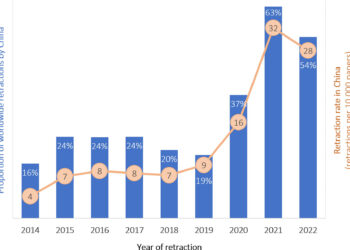
- Image by kevindean via Flickr
It’s a theme I’ve heard many times over the past 6-12 months — companies are cutting back on R&D, training, and hiring big-ticket talent. These intangibles were the first to be cut when the budget axes came out, and are likely to be the last to come back as a recovery mounts. And they don’t figure into GDP estimates.
In an interesting analysis, Business Week writer Michael Mandel talks about how the mismeasure of these intangibles could lead to a premature assumption that the recession is over and an even longer lag before these spending areas are replenished.
As Mandel writes,
official statistics are not designed to pick up cutbacks in “intangible investments” such as business spending on research and development, product design, and worker training. There’s ample evidence to suggest that companies, to reduce costs and boost short-term profits, are slashing this kind of spending, which is essential for innovation. Without investment in intangibles, the U.S. can’t compete in a knowledge-based global economy. Yet you won’t see that plunge reflected in the GDP and productivity statistics, which are still too focused on more traditional sectors, such as motor vehicles and construction. In effect, government statisticians are trying to track a 21st century bust with 20th century tools. Not only is that distorting the critical data that investors, policymakers, and corporate executives use to evaluate the economy, but it might also be creating a false sense of relief as Americans battle a brutal recession.
How important are intangible assets? Recent research finds they account for $1.6 trillion in our economy, compared to $1.2 trillion for machinery and buildings. In 1995, the two were roughly equal, yet growth in the economy has largely come from growth in intangibles — valuable knowledge, skills, and design thinking.
A “false sense of relief” arrived at by measuring a smaller portion of our economy, and one not driving growth over the past 15 years, is exactly what may lead to a lag in restoring spending on innovation, as companies and policymakers are misled by mismeasures into thinking that everything’s OK, and spending in these areas at pre-recession levels might have been unnecessary for economic vitality.
Overall employment of scientists and engineers has fallen 6.3% since the recession began, while overall employment has only fallen 4.1%. Of course, science and engineering jobs pay much better than average, so when they go, more economic vitality vanishes.
Yet, when it comes to what is measured, companies continue to slash:
Alcoa (AA), in an effort to preserve cash, reduced its third-quarter R&D spending by 36% from the year before. “It’s a matter of focusing on your priorities,” says Alcoa spokesman Kevin Lowery. “We surprised people by announcing a profit [last] quarter.” Texas Instruments (TXN), meanwhile, expects to spend $1.5 billion on R&D in 2009, down 20% from 2008, owing to workforce reductions and cost-control efforts. And Johnson & Johnson (JNJ) has reduced its R&D by 13% over the past year.
It is a matter of priorities, but since the GDP will capture the profitability of the less-intangible assets of Alcoa and others, while missing entirely the loss of intangible contributions, a false picture is created.
The issues stemming from these analytical deficiencies affect science spending, scientists, spending on information resources, and innovation around all aspects of endeavor. Cuts to corporate budgets, educational budgets, and governmental budgets have left people with advanced degrees, important skills and abilities, and innovative ideas struggling to find their footing while companies with more traditional property, plant, and equipment have been bailed out. To be fair, the economic stimulus passed under the Obama administration did include funding for R&D, but corporate cuts have been widespread and deep. Yet they aren’t measured.
It gets worse. To cut costs, it seems some companies are targeting the more highly educated, more experienced scientists in their ranks since they are more highly paid and perhaps even more “intangible.”
Mergers and acquisitions are another source of job loss for researchers and scientists, as companies like Pfizer and Wyeth merge, allowing the combined firm to shed thousands of biologists and bench researchers. Outsourcing to CROs and offshore research firms are other ways companies are racing back to profitability. All of these hurt US-based researchers and scientists.
Training is another intangible that has been cut dramatically during the recession, another investment in the future that’s been set aside as companies struggle to regain profitability as quickly as they can. Luckily, some companies like Autodesk, makers of AutoCAD, are allowing unemployed engineers and architects to download their student version free if they say they’re unemployed. They understand the importance of keeping your intangibles sharp.
So, the next time you hear that perhaps the recession is lifting, that halcyon days are on the horizon, remember that the numbers being used for those rosy projections are based on items that are easy to measure, slower to grow, of decreasing value, and not vital for future growth.
This could be a lesson in how intangibles become tangible, I’m afraid.
Discussion
2 Thoughts on "The Hidden Economic Carnage in Science and Education"
![Reblog this post [with Zemanta]](http://img.zemanta.com/reblog_e.png?x-id=2fc5375a-36a3-4a84-9c81-55017b048fa0)


